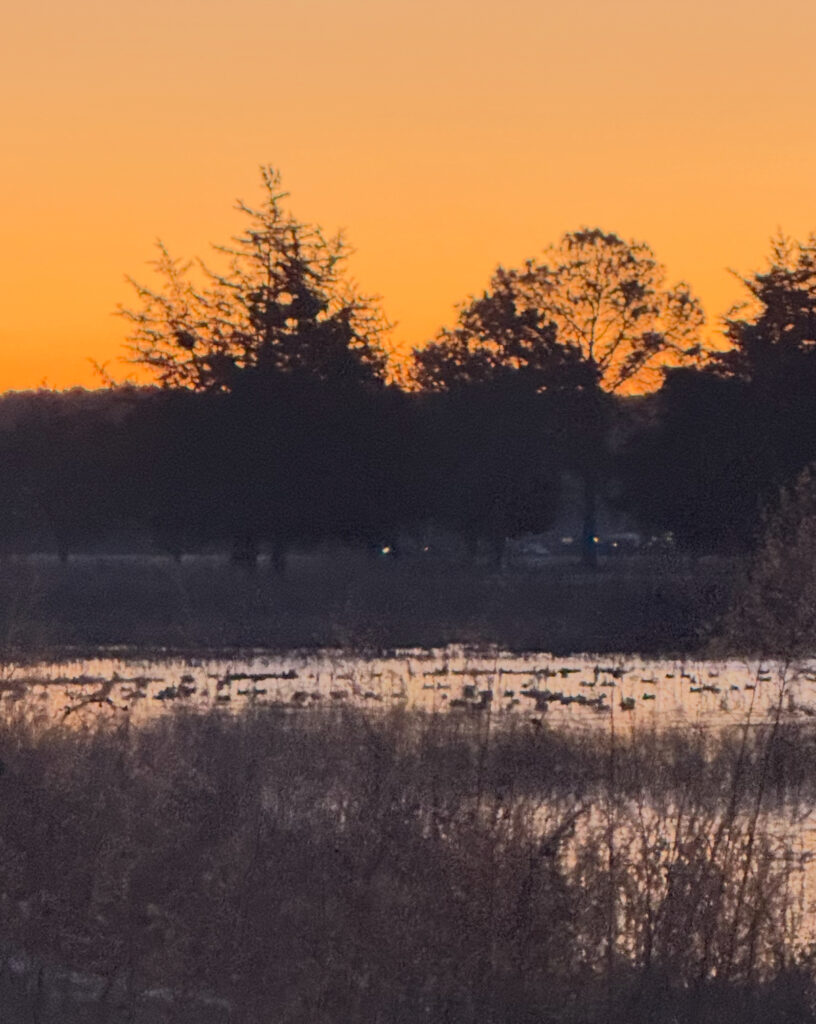Measuring Time Takes More Than a Watch

March 3, 2025
After Sunset at Kingston
Measuring time is clearly easy. We all do it every day. I am consistently late for nearly everything. It is not, however, because I cannot tell time, it is because I am over optimistic about time and my eagerness to accomplish as much as I can each day. My optimism about time merges into the faith in myself. Together these beliefs guide me.
Attention to time has been arduous for as long as I can remember. I stopped wearing a watch in the Swatch watch era. There you go, I just dated myself. As a product of Generation X, I suffer from a few facts like Swatch watches. You are most welcome for this reference and for some of our seven readers, you will begin Googling what a Swatch watch actually is momentarily. They were quite the rage at one point in time as I recall.
The point of this mental wandering is not to reminisce 1990s jewelry fashion or debate if I should focus more on improving my promptness each day. I hope this proves to be more interesting, yet this is where I started thinking while watching waterfowl flip, fly and pitch into my recently created wetland this morning.
The small 5 or so acres of this new wetland habitat on my farm got me thinking about change at the landscape or watershed level. The scale is daunting to say the least.
How long does it take at a landscape, watershed and ecological level for the benefit of a new wetland to be measured?
As land users and agricultural industrialists, we created farmland by clearing, draining and leveling land to feed our communities.
While the current scale of agriculture is challenged by the aspect of local farms contributing to a “buy local food system”, the fact is, agriculture throughout the country is focused on feeding our country and the world in part. This is clearly needed and important economically and socially, and shapes nearly every aspect of modern living.
From this fact, one can start to think about the scale of agriculture and the impact it has had on the landscape globally, or in a more local level, here in the Chesapeake Bay. There are 22 million acres of tillable land in Iowa. Compared to the Delmarva Peninsula, we have roughly 3 million tillable acres on our tiny island. That fact seems nearly insignificant in the framework of production agriculture. Yet, agriculture is the primary driver of every Bay State economy. The watershed encompasses five states including Delaware with New Castle County being largely an urban county full of industry founded on the success of companies like DuPont. Clearly agriculture as an economic influence is important and a cornerstone to our Chesapeake Bay region.
Where is this wandering thought going you wonder…
One thing I promise. I do not have an answer. But, I do have a valuable question to contemplate. My question is focused upon the impact on reversing land use change to conservation and the return of wetlands and forests to landscape where it is appropriate. This act of land use conversion to a conservation land use can happen before our eyes. Within a few months, we can see a wet agricultural field go from a place where we get the tractor stuck to a place where teal want to literally attack you! This is the reason we carry shotguns into the marsh and flooded land we inhabit in the Fall and Winter months. It is out of simple protection we must do this as once seated in a properly brushed box of your other friends, ducks like to attack!
In all seriousness however, while waterfowl are an early indicator of land use change into conservation, it is complicated to argue when does the wetland actually begin to resonate on a landscape level to impact water quality and watershed health.
My heart and mind tell me that time is the critical factor and it is not a quick timeframe.
It is hard to imagine that populations of waterfowl, oysters and rockfish declined precipitously as a response to the woodland or native grass field being cleared for agriculture more than 200 years ago. It all took time to create “downstream impacts”. It was not all at once.
While I have asked a question, I think I am also suggesting there is an answer within the question. Just as it took time to create change, it will in turn, take time to appreciate measurable impacts.
In today’s economy of rapid information and feedback requesting immediate outcomes to share on social media for the public and legislators to “prove its working”, I will offer an argument when it is reasonable “to be late”. Sometimes it just takes time and immense patience is required. Late is not always bad or wrong, it’s just the process, and perhaps the tardiness and time required to demonstrate ecological success comes out of the best parts of our natural world. Just as patience comes out the best parts of ourselves.
Let me offer one final proposal for certainty in this uncertain universe of land conservation. Perhaps we can take pleasure in the flipping, diving, flying and acrobatics of Green-Wing Teal in late January as they pour in over the yellow pine. They are finding a new wetland habitat which in this case throughout the previous nearly 200 years has been largely a place to lose farm machinery, raise poor crops or simply cut the ditch banks in years the field is too wet to farm.
Measuring success in conservation takes more than a Swatch watch clearly. This measurement starts with optimism and concludes with faith. Optimism in that we can accomplish all that we endeavor to do, and faith in that we are doing the best we can to care for the land.
Be Well.
BHA
